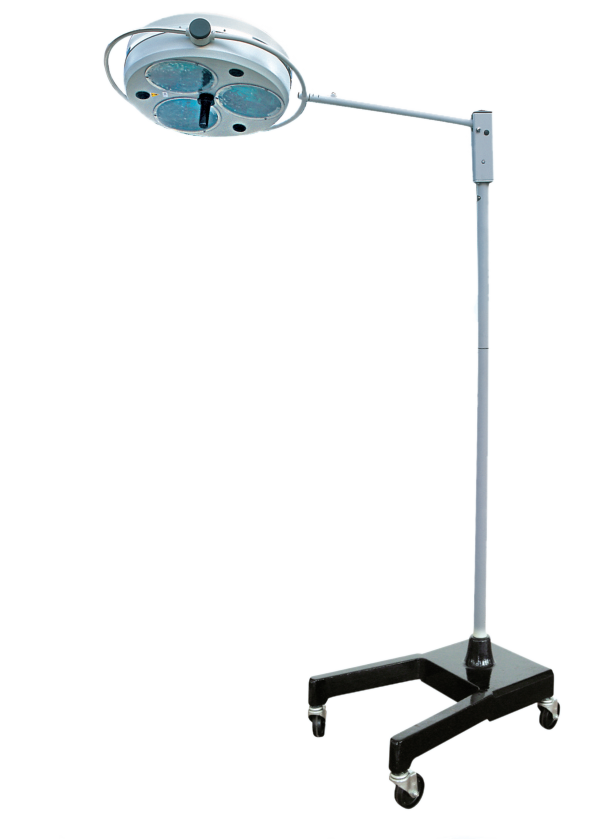
Cold Light Series Operation Lamp
(build-in Type, tungsten Halogen Bulb)
Every hospital and medical facility needs the right lighting equipment to ensure that all operations can be performed safely and efficiently. Operating lamps provide this necessary illumination, but what else makes them so useful? In this article, we're exploring the many uses of an operating lamp, from providing lighting in a surgical setting to helping professionals perform detailed work. Read on to find out more!
Cold Light Series Operation Lamp (build-in Type, tungsten Halogen Bulb)
| Main Technical Data | ||
|---|---|---|
| NML200632 | Illuminance of main lamp Illuminance of supplementary lamp |
80000- 120000Lx( Stepless light adjustments) 3000- 60000Lx( Stepless light adjustments) |
| NML200602 | Illumination intensity Illumination intensity |
80000- 120000Lx( Stepless light adjustments) 60000Lx |
| NNL200630 | Color Temperature | 4300±200k |
| Color rendering index | Ra≥90 | |
| Mains Vollage | - 200V±22V 50Hz±1Hz/ - 110V±11V 60Hz±1Hz | |
| Rated Vollage Of Bulb | 24V | |
| Rated Power Of Bulb | 50W | |
| The lowest height for instal lation | 2800mm |
An operating lamp is a type of light that is commonly used in surgical procedures. It is designed to provide a bright, focused light source that can be directed at specific areas of the body. Operating lamps are typically mounted on ceiling-mounted or floor-standing rails, and they may be equipped with various accessories such as filters and diffusers. Operating lamps are used to illuminate the surgical field and to provide direct lighting for procedures such as suturing and dissections. They can also be used to examine patients prior to surgery, and during postoperative care. In some cases, operating lamps may be equipped with heaters or other devices to provide additional warmth or other treatments during surgery.
Operating lamps are used in a variety of medical settings to provide illumination during procedures. They typically consist of a light source, reflector, and shade. The light source is usually a halogen bulb, which emits a bright, white light. The reflector is used to direct the light onto the area being illuminated, and the shade helps to reduce glare. Operating lamps are available in a variety of sizes and shapes to suit different needs. They can be floor-standing or ceiling-mounted, and may be portable or permanently installed. Some models include features such as adjustable height, angle, and intensity. When choosing an operating lamp, it is important to consider the type of procedure that will be performed, as well as the size and layout of the room. For example, lamps with a wide beam spread may be more suitable for larger rooms or procedures that require more light.
Operating lamps are used in a variety of settings, but they are most commonly found in hospital operating rooms. These lamps are designed to provide a clear, bright light that is essential for performing surgery. Operating lamps can be used as a safety measure in several ways. First, they can help to prevent errors during surgery by providing clear visibility of the surgical area. Secondly, they can be used to illuminate the entire operating room so that staff can identify potential hazards. Finally, operating lamps can be used to create a sterile environment by preventing the spread of infection.
Operating lamps are an important part of any medical facility. They provide the necessary light for surgeons to see what they are doing during surgery. However, operating lamps can also have a negative impact on the environment. Operating lamps use a lot of energy and produce a lot of heat. This can lead to higher energy bills for the medical facility and contribute to climate change. In addition, operating lamps produce a large amount of light pollution. This can disrupt the natural night cycle for animals and make it difficult for people to sleep at night. There are ways to reduce the impact of operating lamps on the environment. Medical facilities can switch to more energy-efficient models of operating lamps. They can also install dimmers or timers so that the lights are not left on unnecessarily. By taking these steps, medical facilities can help protect the environment and save money at the same time.
If you are looking for alternatives to using an operating lamp, there are a few options that you can consider. One option is to use a surgical headlight. These headlights are designed to provide a bright, focused light that can help you see what you are doing when performing surgery. Another option is to use a LED operating lamp. These lamps provide a bright, even light that can help you see what you are doing when performing surgery.